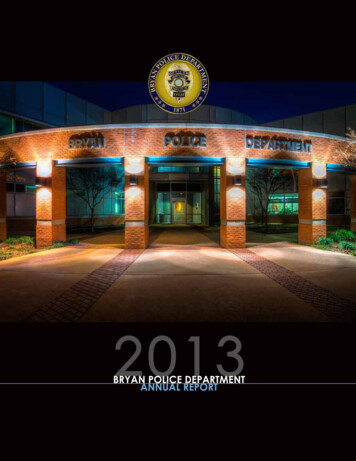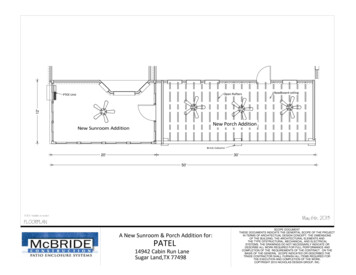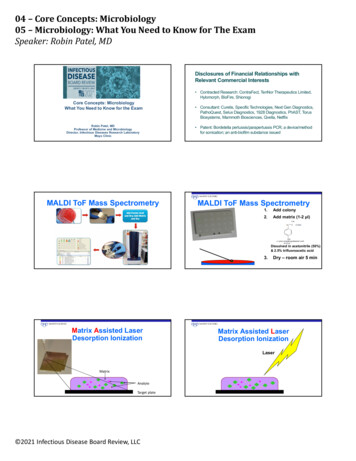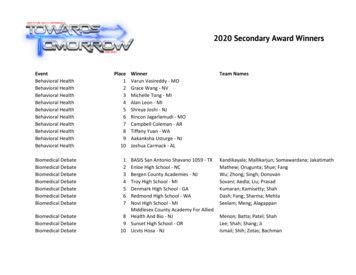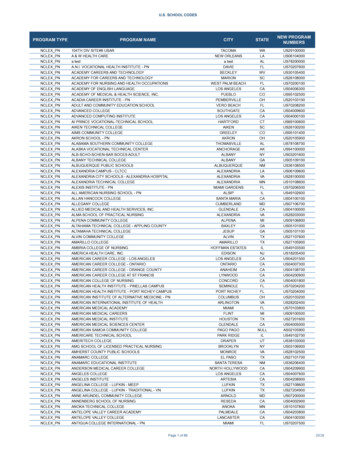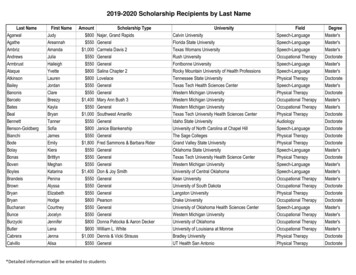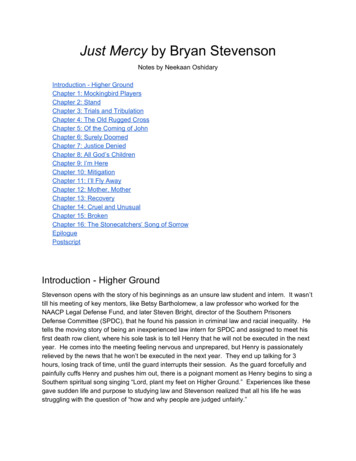
Transcription
Nutrition Care Process (NCP)By:Trisha Patel, Amanda Bryan,Amanda Sorum, Bonnie Broek
What is the Nutrition Care Process- The Nutrition Care Process, also known as the NCP, asdefined by the Academy of Nutrition and Dietetics is - “systematic approach to providing high-quality nutritioncare”- The Nutrition Care Process provides the structure forcustomized care to be the most efficient plan in the RD’s“toolbox” . The set framework of the model allows the RD to“fill in the blanks” for each patient.
Nutrition Care Process-4 distinct, interrelated steps.1.Nutrition assessmenta.2.Nutrition interventiona.3.4.Data collected during the nutrition assessment guides the RD in selection of the appropriatenutrition diagnosis(es) (i.e., naming the specific problem). TheRoot cause (or etiology) of the nutrition problem and aimed at alleviating the signs andsymptoms of the diagnosis.Nutrition DiagnosisMonitoring & Evaluationa.Determine if the patient/client has achieved or is making progress toward the planned goals. If patient/client reveals another piece of new assessment data/information, thatwill cause the RD to re-assess, re-diagnose and perhaps modify the plan that he/shehad started discussing with the client.
A.D.I.M.E
A.D.I.M.EA AssessmentThe assessment is a dynamic and ongoingevaluation of data that includes medical,health, social, dietary, nutritional,medication, supplemental or herbal history,physical, anthropometrics, and laboratory.The purpose is to make professionaljudgement about nutrition status, and this isthe foundation of nutrition care.
Assessment ABCD’sAnthropometricsPhysical measurements that can be compared to standards in order to reveal the nutritionalstatus, growth, and health of an individual.Ht., Wt., age, and gender are commonly used. Others?This data provides the means to establish energy, protein, and fluid needs.Biochemicalmedical tests and proceduresMay include Na, K, BUN, Creat, Gluc, LDL-chol, Alb, Prealb,or others.
Assessment ABCDClinicalPhysical exam conducted on the patient. The exam is used to assess everything fromeyesight and reflexes to movement on the body and medical history.DietaryDietary reports begin with a 24hr recall on what the patient has consumed. Thisassessment may include questionnaires, surveys, worksheets and more in order toobtain an accurate amount of food related history from the patient.
The purpose of the nutrition diagnosis it toidentify and describe a specific nutritionproblem that can be resolved or improvedthrough treatment/nutrition interventionby a food and nutrition professional.A.D.I.M.ED Diagnosis
CategoriesIntake: Too much or too little of a food or nutrient compared to actual or estimatedneeds.Ex. Excessive Energy Intake [NI - 1.5]Clinical: Nutrition problems that relate to medical or physical conditions.Ex. Difficulty Swallowing [NC - 1.1]Behavioral: Knowledge, attitudes, beliefs, physical environment, access to food, orsafetyEx. Disordered Eating Pattern [NB - 1.5]
Choose the Correct Diagnosis!a.Inadequate energy intake NI-1.2b.Excessive energy intake NI-1.3c.Food- and nutrition-related knowledge deficit NB-1.1d.Impaired ability to prepare foods/meals NB-2.4
P.E.S. Statement-Names the nutrition problem (P)-Identifies its cause (or etiology) (E)-Lists the assessment data (signs and symptoms) (S) that justify the problem.-Written as:Nutrition diagnosis term “related to” etiology “as evidenced by” signs andsymptoms of the nutrition diagnosis.EX: Inadequate energy intake related to food and nutrition-related knowledge deficitas evidenced by patient’s/ client’s food selections as recorded on food diary.
A.D.I.M.EI InterventionThe intervention is the purposeful action ofthe RD aimed at improving the condition ofthe patient’s nutrition diagnosis. Theyinclude interventions, such as, “nutritionrelated medication management,” “nutritioneducation,” and “nutrition counseling.”Goals must be:-Measurable/ RealisticallyAttainable/Personalized-Related to P.E.S. Statements in order tocreate unification throughout the NCP.
Choose thecorrect verbagefor settingpatient goalsfor theintervention:a.Pt agrees to do everything RDNsays because I said so.b.Pt will walk out of office andforget everything discussed.c.Pt agrees to try to .d.Pt is clearly not in the correctstage of change and will failmiserably at any goal set.
A.D.I.M.EM MonitoringE EvaluationTHE FINAL TWO STEPS!Plan set in motion by the nutrition professionalis not only appropriate for that patient butattainable and maintainable.RD will assess whether the goals and plan set inmotion is appropriate and how to adjust it astime passes.Nutrition Monitoring: preplanned review andmeasurement of selected nutrition careindicators of patient/client’s statusNutrition Evaluation: the systematiccomparison of current findings with theprevious status-
Monitoring:Monitoring &Evaluation:3 Components-Monitoring-Measuring-EvaluatingProvide evidence that the nutritionintervention is changing/not changingpatients behavior or status?Measuring:Measure outcomes by collecting dataon nutrition outcome indicatorsEvaluating:Compare current findings tointervention goals/referencestandards & EVALUATE overall impact Decide to discharge pt/ continue counseling
Monitoring & EvaluationMonitoring-Ensure patient understands goals and their importance. Not doing it “just because”-Discuss problems, questions, and concerns with patients regarding goals.-Adhering? Continue on path or Needs to change-Continue to document, update data to patient’s file and continue to measure in order toassess progressEvaluating-Compare new data to old & Compare the obtained results to the desired goals.-Assess whether goals are being obtained, and if they are truly helping to improve thehealth of the patient.-If not, discuss alternatives.
Monitoring &Evaluation:A.D.I.M.EDon’t forget -Monitor Progress-Measure Outcome-Evaluate Outcomes-Document
Impaired Renal Function Case StudyAnthropometrics:Biochemical Data:Age: 24 yrs. oldGlucose: 205Ht: 5 ft. 0 in. -- 60 in. -- 152.4 cm -- 2.32 m2BUN: 80Wt: 140 lbs. -- 63.6 kgCholesterol: 443Gender: FemaleTG: 300BMI: 27.4 (overweight)HbA1C : 8.2 HGFR: 28 ml/min
Impaired Renal Function Case Study:Dietary Intake AssessmentBreakfast:-Fried egg-Fried bacon-Fried potatoes-Toast w/ butterLunch:PM Snack:-2 tamales w/ chili -25 potato chipscon carne-1 can Coke-Fry bread-1 can CokeDinner:-3 tacos made w/ground beef,onion, tomatoes,lettuce & flourtortillas-CokeHS Snack:-Peanutbutter &crackersWhat recommendations can we suggest for herto improve her dietary choices?
Impaired Renal Function: PES StatementsProblem:Altered nutrition-related laboratory valuesORFood & nutrition related-knowledge deficitEtiology:Alteration in GI fxnSigns & Symptoms: Abnormal GFRORRenal failureOREdema & shortness of breath
Impaired Renal Function: PES StatementsProblem:Excessive carbohydrate intakeORRenal failureEtiology:decreased energy needsSigns & Symptoms:ORdiabetes mellitusreported dietary intake & lab valuesORHigh blood pressure
Thank You!Good luck with the remainder of your semester and PNC appointments!
Nutrition Care Process-4 distinct, interrelated steps. 1. Nutrition assessment a. Data collected during the nutrition assessment guides the RD in selection of the appropriate

